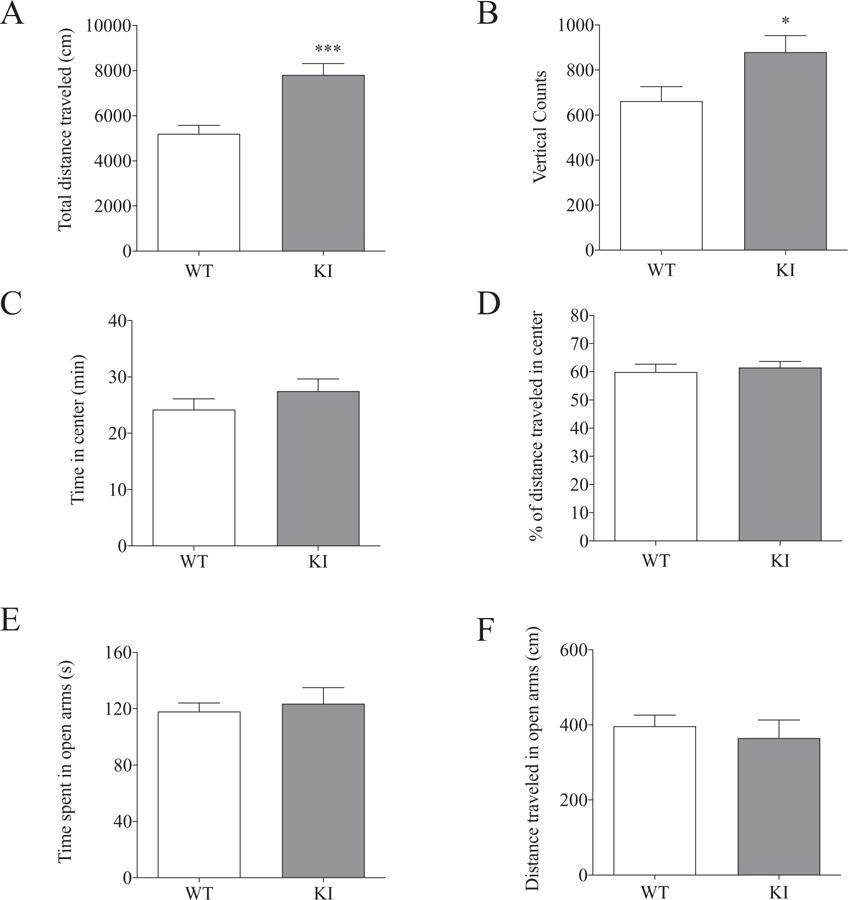Fig. 5.

Gabrg2+/K328M KI mice exhibited hyperactivity but not anxiety. Hyperactivity was assessed using the open field test and KI mice had a hyperactive phenotype. Data was collected from 60 min in the locomotor activity chambers. A. KI mice traveled significantly greater distances (WT 5195 ± 376.5 cm, n = 10; KI 7807 ± 505.7 cm, n = 11; Student’s t-test, p = 0.001). B. KI mice had more vertical jumps than WT mice (WT 662 ± 65, n = 10; KI 879 ± 74, n = 11; p = 0.04). KI mice displayed no anxiety-like behaviors in both the open field test and the elevated zero maze. C, D. KI mice spent equal time in the center of the open field chamber (WT 24.2 ± 6.1 min, n = 10; KI 27.5 ± 7.2 min, n = 11, p = 0.27) and traveled the same distance in the center, as a percentage of total distance traveled, compared to WT littermates (WT 59.71 ± 2.71, n = 10; KI 62.31 ± 2.16, n = 11, p = 0.64). E, F. In the elevated zero maize, KI mice spent similar time in the open arms (WT 118.07 ± 6.07 s, n = 11; KI 123.64 ± 11.37 s, n = 11, p = 0.67) and traveled similar distance (WT 396.78 ± 29.51 cm, n = 11; KI 365.17 ± 48.06 cm, n = 11, p = 0.58) compared to WT littermates.
